Here is a list of major developments in computing, consumer and entertainment electronics through the 20th Century and into the early 2000s, before the widespread availability of electronic images…
1877 Thomas Edison records sound.
1890 Dealer convention in Chicago condemns the confusion caused by two different kinds of recording cylinder machine, the Phonograph from Thomas Edison and the Graphaphone from Alexander Graham Bell. Says one delegate – pretty much summing up the next century and more of technology: “What is the use of having two machines?
…. have but one machine, and that a good one, and get the best results you can, and the public will be satisfied …. just so sure as you show both machines at the same time, you will lose a customer…You had better take these machines and pile them up on a ten acre lot to get rid of them, and have one good machine and then you are all right”.
1890s First telephone networks that let different home phones talk to each other.
Early 1900s The first digital music recording made by perforating a paper piano roll. Analogue magnetic wire recorder devised in Denmark by Valdemar Poulsen and developed further in the US in the 1940s.
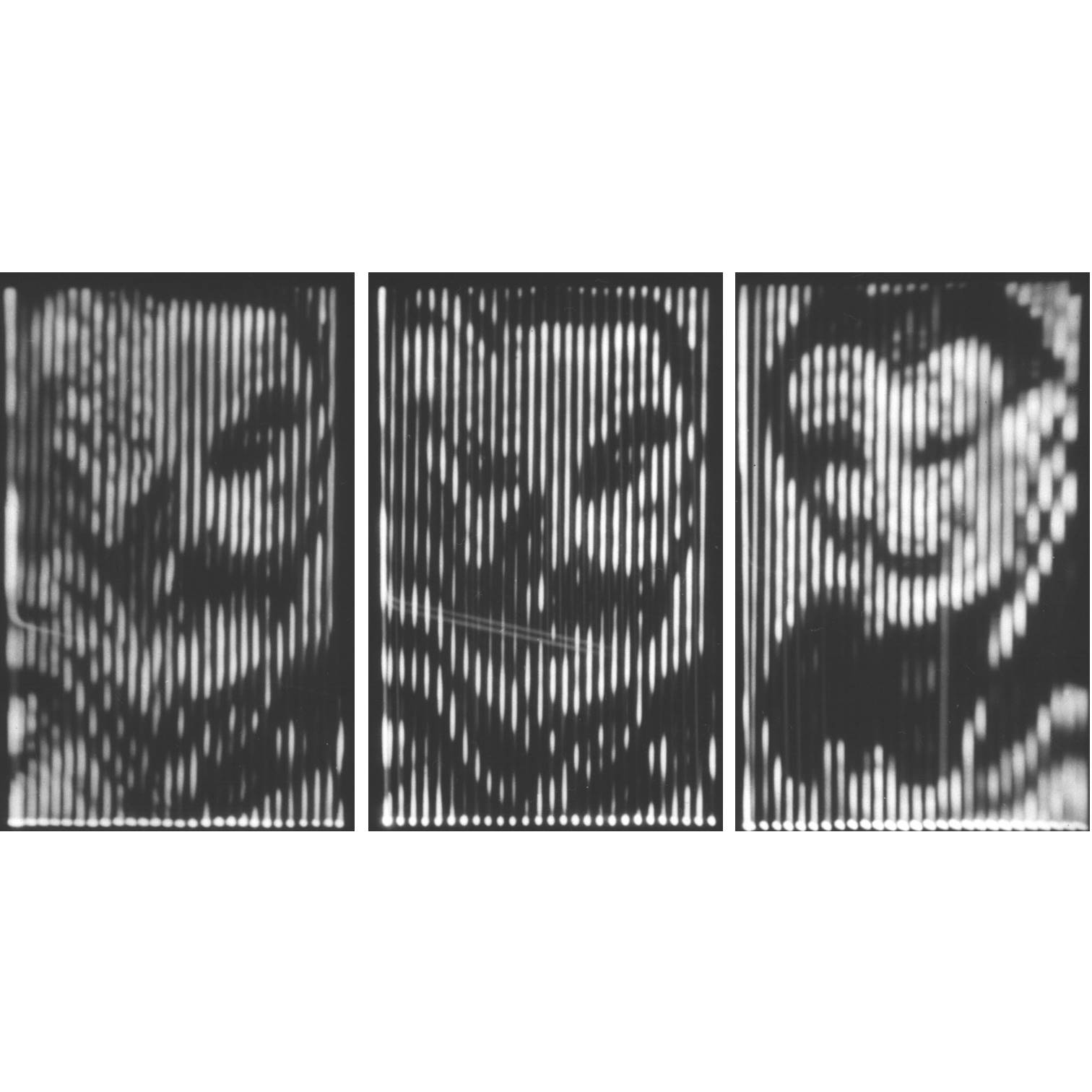
1925 John Logie Baird in the UK transmits 30-line TV picture of a ventriloquist’s dummy nicknamed ‘Stooky Bill’.
1926 Kenjiro Takayanagi in Japan transmits 40-line pictures.
1928 John Logie Baird makes and sells video discs in the UK, based on his mechanical TV system.
1931-1933 Alan Blumlein develops stereo sound at EMI Labs in the UK, while Bell Labs in the US works along similar lines.
1932 Baird videophone.
1935 BASF and AEG Telefunken in Germany make the first practical tape recording system – later used by Hitler for pre-recording speeches.
1936 Telefunken televises the Olympics in Berlin, using all-electronic equipment. EMI-Marconi team in the UK (under Isaac Shoenberg and including Alan Blumlein) develops and regularly transmits all-electronic TV.
1937 Edwin Howard Armstrong sets up first FM radio station in the USA.
1938 Alec Reeves invents PCM digital audio but cannot make it work with the electronic tubes/valves then available for electronic switching.
1940 Walt Disney releases Fantasia feature film with multi-channel sound.
1943/1944 The code-breakers at Bletchley Park in the UK build early computers such as Colossus, with electronic tubes/valves, led by Alan Turing.
1944 Eniac computer built in the US, also with tubes/valves, to calculate artillery shell trajectories. Automated radio production by John Sargrove.
1945 Jack Mullin ‘liberates’ a German open reel/reel-to-reel tape recorder back to the USA and interests Bing Crosby in backing development.
1947 Bell Labs invents the transistor.
1948 London Olympics televised live by the BBC. In the US, CBS unveils the vinyl LP. Edwin Land launches the Polaroid instant picture camera.
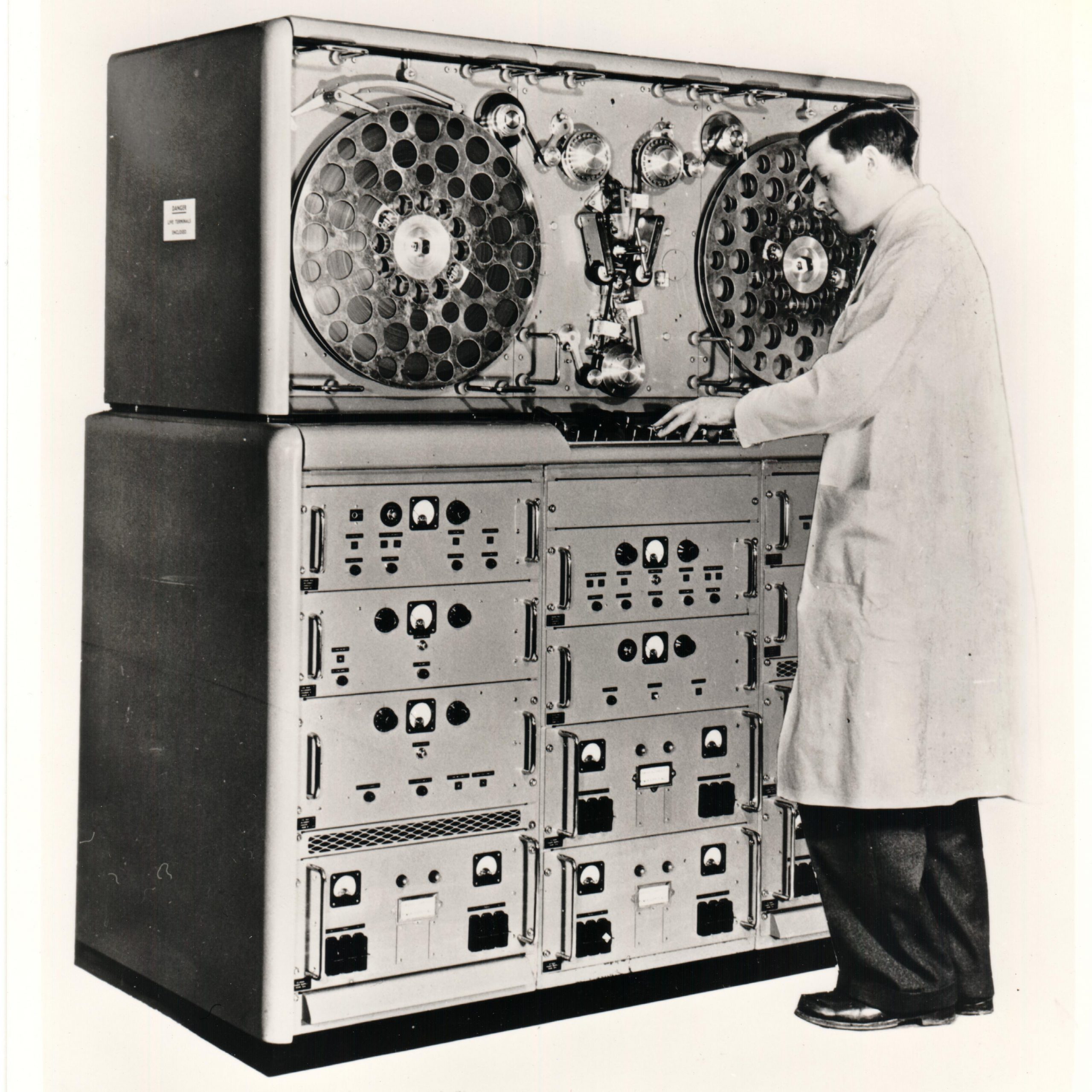 1953 USA adopts NTSC colour system. BBC develops Vera VTR.
1953 USA adopts NTSC colour system. BBC develops Vera VTR.
1956 Ampex demonstrates the first practical VTR video tape recorder.
1958 Recording Industry Association of America (RIAA) sets the standard for stereo vinyl discs.
1960 First Global Positioning System, GPS, satellites launched by US military.
1963 Philips announces the Compact Cassette which makes home tape recording much more user-friendly.
1967 PAL colour TV system first adopted by the BBC for UK TV.
1969 sees the Moon Landing, heavily dependent on computers. Meanwhile ARPA, the Advanced Research Projects Agency in the US builds a robust (nuclear bomb-proof) military and educational communications network that will eventually become the Internet.
1970 ARPANET used by US Department of Defence.
1971 Japanese companies launch the U-Matic professional/industrial video cassette recorder. Telefunken and Decca (Teldec) TeD video disc prototype.
1972 Philips offers the N1500 home video cassette recorder and demonstrates prototype VLP/Laservision.
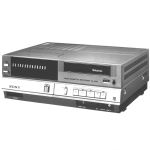
1975 Sony develops the Betamax home VCR. Teldec (Telefunken and Decca) show off their TeD home video disc.
1976 JVC launches VHS to rival Beta, triggering a leapfrog battle to offer the longest playing time per cassette. Tom Stockham in the US makes the first commercial digital music sound recording, using computer tape. Ethernet computer networking system first described. Panasonic VX VCR system launched in Japan and USA and soon withdrawn because of VHS.
1977 Polaroid instant movie system.
1978 Philips starts selling the Laservision (analogue) video disc, previously called VLP. Interactive video systems follow in the 1980s. Matsushita/Panasonic show Visc video disc.
1979 Philips/Grundig V2000 VCR. Sony Walkman. Decca releases LPs sourced from digital recordings made with electronics that convert analogue audio to a PCM digital bitstream that is captured by a reel-to-reel video recorder. LVR Linear Video. Prestel Viewdata.
1980 Philips and Sony set the standard for CD. Early electronic cinema trial in UK. Telefunken Mini Disc. Nimslo 3D camera.
1981 IBM Personal Computer, PC, launched. RCA launches the home video SelectaVision Capacitance Electronic Disc (CED), which was dead by 1984. Sony Mavica electronic camera.
1982 The UK’s Independent Broadcasting Authority (IBA) develops the Multiplexed Analogue Components (MAC) TV system for direct broadcast satellite (DBS) television services – later upgraded to High Definition MAC and adopted by the European Broadcasting Union (EBU). UK government licenses BBC to launch a DBS service. Holophonic sound from Hugo Zuccarelli.
1982 UK Live TV experiment with 3D TV. UK ITAP wiring Britain. Sony Betacam pro VCR.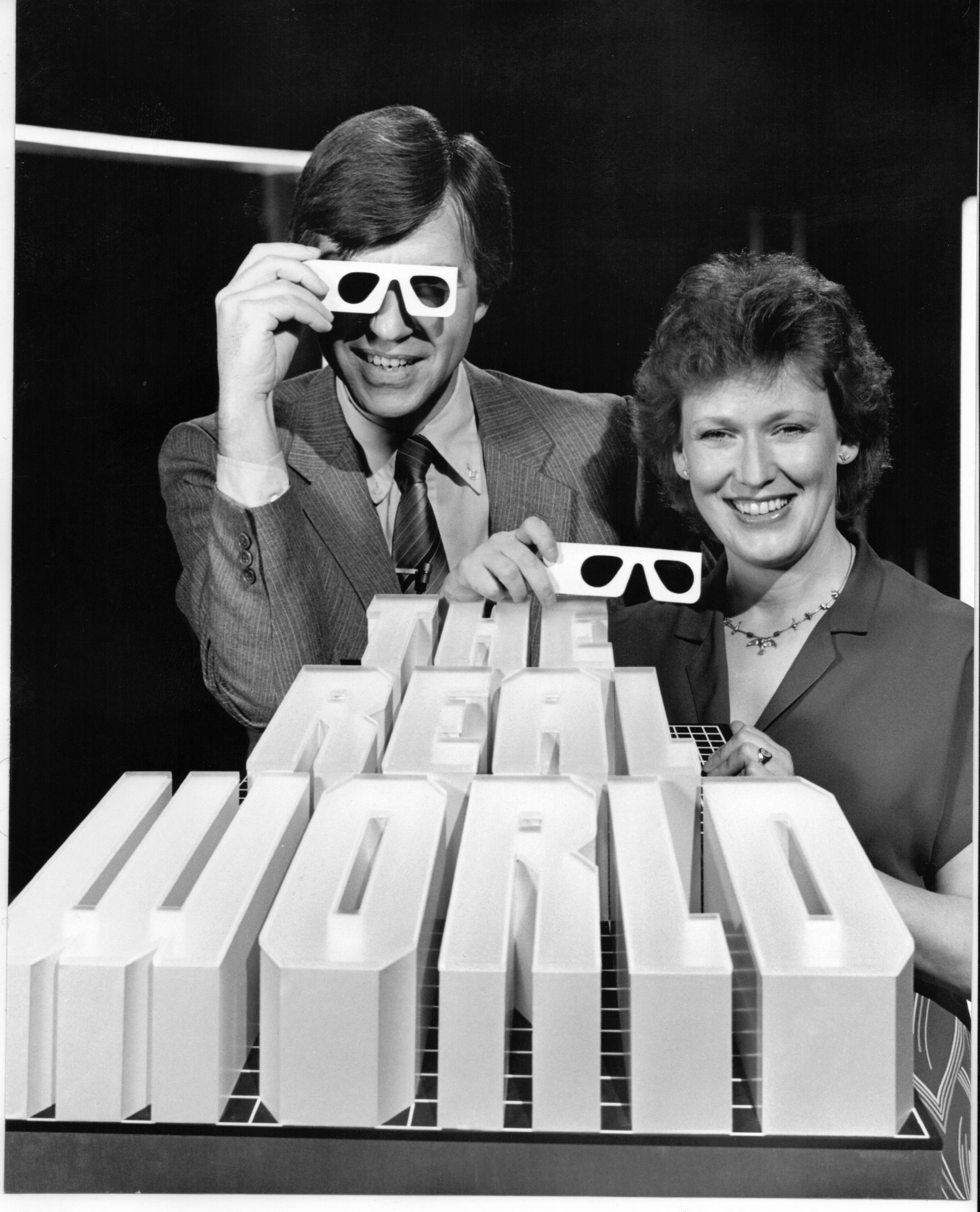
1982/3 Philips and Sony launch the CD.
1983 JVC launches the VHD, Video High Density, home video disc system. it was effectively dead by 1986. Civilian use of ARPANET cleared by US Department of Defence.
1983 – 1995 GPS progressively opened up for civilian use and the service expanded and made more accurate.
1984 Apple launches the easier-to-use Macintosh, Mac, home computer. Compusonics – first attempt at recording digital audio on home computer floppy discs. First Ethernet networks, running at 10 mbps. MSX computer system.
1985 Ethernet used in consumer IBM and IBM Clone PCs. Panasonic MII professional recorder.
1986 At a CCIR meeting in Dubrovnik, Japan tries to set a world standard for analogue HDTV with 1125 lines at 60 Hz. Europe’s Eureka Research programme takes up the rival MAC system as Project 95 (with Bosch, Philips, Thomson and Thorn-EMI on board). British Satellite Broadcasting (BSB) takes over the BBC’s DBS licence. An EU Directive makes MAC the Euro-standard for DBS. Domesday Disc. Digital circuit TV set with PIP/Picture in Picture.
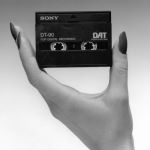 1987 DAT Digital Audio Tape cassette launched. CD Video format launched by Philips. Drexon Laser card. Early solid state recorder backed by Robert Maxwell. JVC launches S-VHS.
1987 DAT Digital Audio Tape cassette launched. CD Video format launched by Philips. Drexon Laser card. Early solid state recorder backed by Robert Maxwell. JVC launches S-VHS.
1988 The US FCC favours an HDTV system based on terrestrial NTSC, with 525 lines at 60 Hz. In the UK BSB unveils the ‘Squarial’, a square flat aerial to replace the conventional dish. It was actually just a mock-up. At Brighton IBC Eureka 95 demonstrates analogue HD-MAC with 1250 lines at 50Hz. VCR programming aids developed. Work begins on PALPlus TV system.
1989 The US ATSC withdraws support for Japan’s 1125/60 production standard. Nokia joins Eureka 95 MAC project. Rupert Murdoch launches the Sky Television DBS service using the existing PAL analogue TV system instead of MAC, and with receivers made by Amstrad and satellites launched by SES Astra. (Sir) Tim Berners-Lee, at CERN in Switzerland, invents the World Wide Web, a way of cross-linking documents on different internet sites.
1990 BSB launches its MAC DBS service with the slogan ‘It’s Smart to be Square’ – referring to the Squarial antenna. Later same year BSB and Sky merge to form BSkyB, and abandon new MAC in favour of old PAL. World Wide Web now working. Sony Data Discman electronic book.
1991 Karlheinz Brandenberg in Germany develops an audio compression system, sowing the seed for MP3. Senator Al Gore and George Bush Snr call for an Information Superhighway. CDi Interactive CD is launched.
1992/3 The Fraunhofer Institute in Germany creates MP3 from Brandenberg’s work, compressing music to one tenth the data density of a CD. Kodak launches Photo CD. Sony launches Mini Disc.
 1993 Bill Clinton (right) and Al Gore push for an Information Superhighway. 3DO Video game. Apple Newton.
1993 Bill Clinton (right) and Al Gore push for an Information Superhighway. 3DO Video game. Apple Newton.
1994 The White House opens its own Internet web site.
1996 Ethernet speed increased to 100 Mbps.
1997 First use of Ethernet for audio – Cobranet.
1998 Google starts indexing the Internet for easier searching and better discrimination between useful and useless information. Digital Terrestrial Pay TV service, ONDigital (later ITV Digital), launches in the UK.
1999 Napster uses MP3 and the Internet to offer a music sharing service while the music industry creates a body called SDMI, the Secure Digital Music Initiative, to try and agree a format for sharing digital music and controlling copying with DRM, Digital Rights Management. Gigabit Ethernet now at 1000 Mbps.
2001 SDMI disbands. Apple launches iTunes and then the iPod.
2002 ONDigital/ITV Digital Pay TV Service in UK founders and is replaced by the free-to-air Freeview DTTV platform.
2003 Apple launches the iTunes online music store, with proprietary DRM.
2007 Apple launches iPhone. Google Android unveiled.
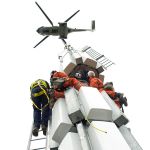 2007/2008 The UK starts switching over from analogue to all-digital TV following a huge transmitter refit program funded by the BBC licence fee.
2007/2008 The UK starts switching over from analogue to all-digital TV following a huge transmitter refit program funded by the BBC licence fee.
2009 Analogue TV switched off in the USA, pretty much overnight.
2012 UK switches off the last analogue TV transmitters, after a 5 year rolling switch-over program.
2013 Audio over IP.
